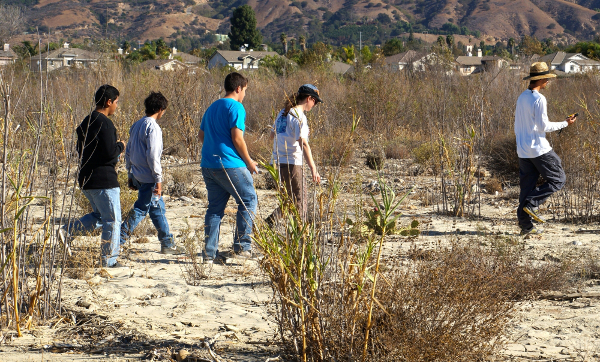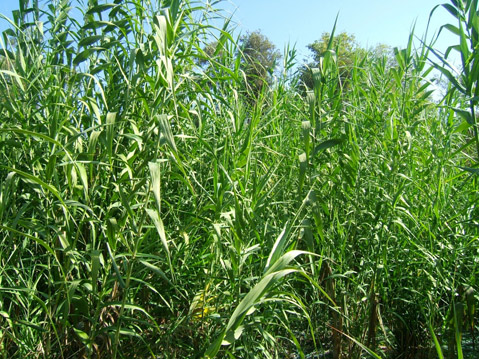Riparian Restoration Ongoing
University and High School Students Work to Eradicate Arundo Donax

UCSB researchers and Ventura County high school students are joining forces in an effort to rid the Santa Clara River of a noxious invasive species, arundo donax, or giant cane. Tom Dudley, of UCSB’s Riparian InVasion Research Laboratory (RIVR Lab), and research professor Adam Lambert have spearheaded the multiagency effort, alongside students from Santa Paula High School, Foothill Technology High School, and Fillmore High School, in an attempt to banish the nonnative reed from the waterway and reintroduce native species to a 13-mile stretch of river. Dudley, Lambert, and company are using the project as a real-world education on riparian restoration techniques.
The reed removers are taking down the plant either by spraying it with a federally approved herbicide, glyphosate, or chopping down the plants manually with chainsaws and loppers. For the next year, the students will work to propagate native plants from collected seeds, and they are bringing some arundo donax back to school for other students to use in school art projects.

The arundo plant, believed to have been brought to Southern California in the 1800s as an ornamental and erosion-control plant, has thrived in our region’s riparian environments, choking out native species and taking water with it —arundo drinks up four times as much water as the river plant species it outcompetes. When wildfires scar the drought-dried river valleys, the especially flammable cane ignites the historically fire-shy riversides, acting as a wick and lighting cottonwoods and willows, leaving room for a complete arundo monoculture in its wake, Dudley said.
“Comparatively, the arundo problem that we have in Santa Barbara County is not nearly as bad as it is in a lot of the other waterways in Southern California,” said Santa Barbara Agricultural Commissioner biologist Bree Belyea. Efforts like the Santa Ynez River Tamarisk and Arundo Project, a joint effort between the County Agricultural Commissioner’s office and the city’s Creeks Division, have reduced arundo donax populations along the Santa Ynez River, Arroyo Burro Creek, Rincon Creek, and elsewhere.



